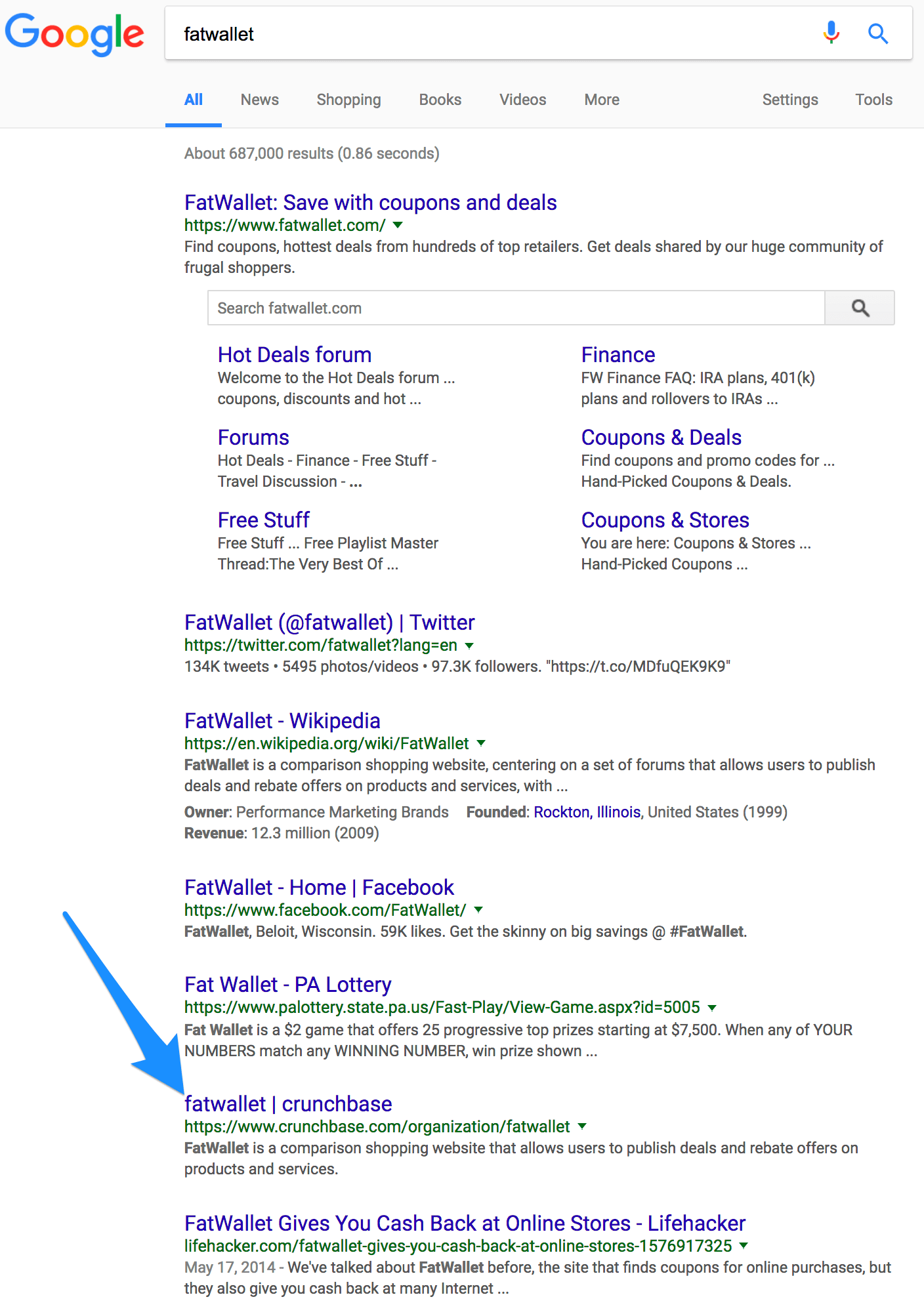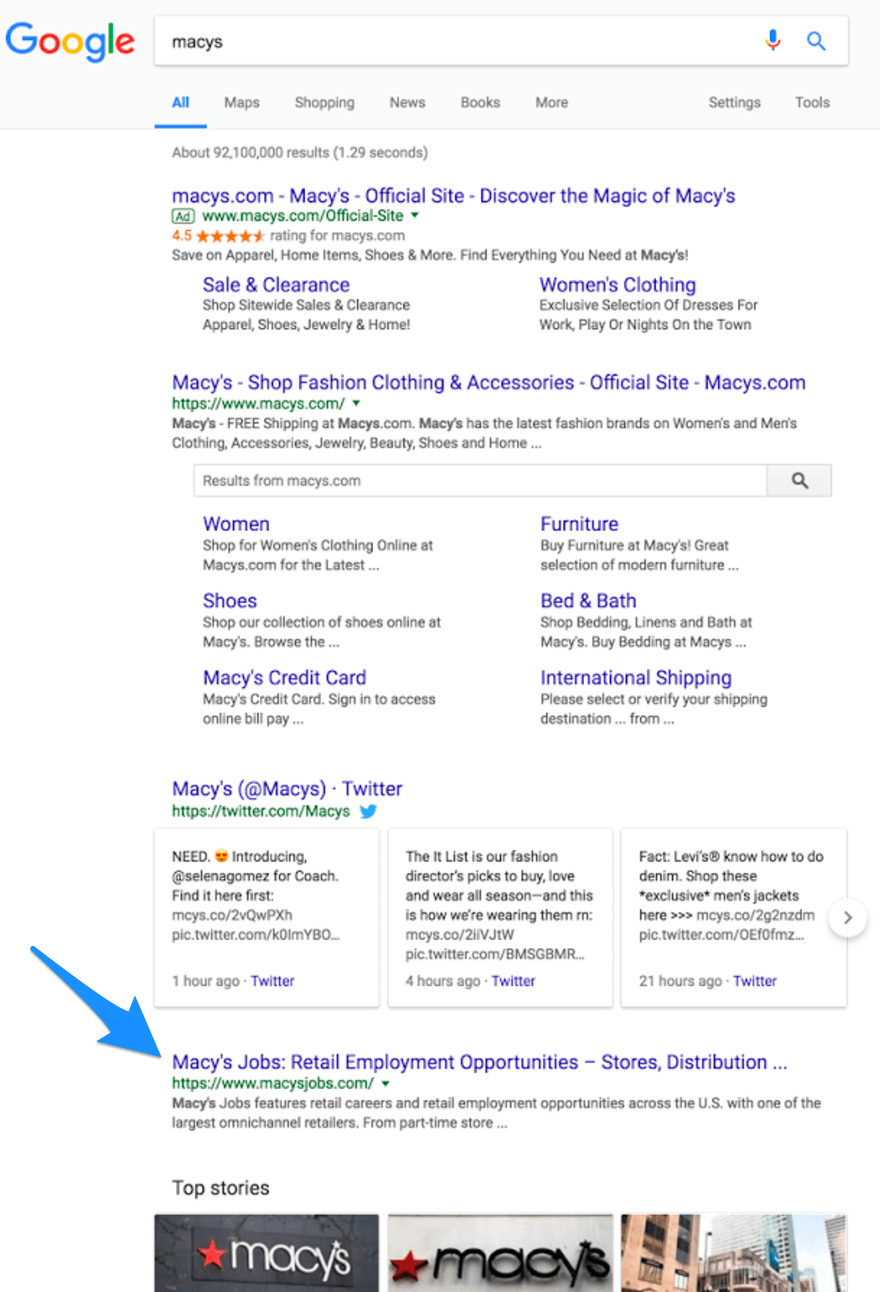6 web properties you can use to protect your branded search results (with real examples)

This article was co-authored with my colleague at Go Fish Digital, Samantha Hughes.
Working at an agency that does a large amount of online reputation and crisis management, brand protection is always top of mind. I’ve written about how autocomplete is your brand’s true first impression, and that is still very much the case. What comes up when people search on your brand name also sheds light on your company’s reputation — even when those results aren’t from your own site.
If you aren’t actively working on what ranks for your brand name, you leave yourself exposed to potential damage from:
- complaint websites that can start ranking for your brand name.
- competitors who would see value in optimizing negative content about your company for search.
- less-than-flattering reviews beginning to rank well for your brand name.
As Benjamin Franklin said, “An ounce of prevention is worth a pound of cure.” It is much better to spend time proactively preventing one of the situations above, rather than reacting to it after the fact.
And the prevention isn’t all that difficult. If you can create some strong properties that can rank alongside your own domain, you can build a proverbial “wall” that would help suppress negative content from surfacing on page one for your brand name.
Before undertaking the SEO tactics to get that “wall” of content to rank, though, you have to have the right content available to work with. When working with clients, we always start by identifying existing pages that could rank well. These should be highly targeted (brand name in the URL, title and so on), have good domain authority, and ideally already rank on page two or three.
After that, though, we often turn to creating new content to rank. This new content, combined with what already exists, gives us a lot of bricks to build that strong wall.
The following are some common, and not-so-common, options for creating content that can rank well for your brand name.
1. Crunchbase
Creating a profile on Crunchbase is super-easy, and your profile there has the potential to rank really well. The fact that Crunchbase has been around for over a decade and has domain authority of 89, according to Moz, means that Google tends to trust content on the site.
Profiles on Crunchbase can be a simple or as rich as you’d like them to be. We encourage our clients to use every category possible, filling out as much information and making it a really useful profile for people actually researching the company.
An example of one of the categories is “News,” which allows businesses to add news articles/publications to their profile. As new articles are posted about your brand, we recommend you add them here, which will keep the page updated with fresh content, as well as providing a backlink (albeit no-followed) to that new article.
An example of Crunchbase ranking on page one for a brand name is for Fatwallet, pictured below. Their profile could use some expanding, as it really only highlights the “News” and “Competitor” categories, but even so, it ranks well for a pretty popular internet brand name.

2. Reddit
Marketing on Reddit is a minefield, but when done right, it can be a huge branding win. However, what most people don’t realize is that it can help with online reputation management (ORM) as well. Cooler brands with large fan bases can have dedicated, highly-active subreddits where loyalists interact and share relevant content.
Outlier Clothing, makers of high-end everyday wear, have such a community, whose digital home is on the r/Outlier subreddit, which ranks #2 in Google when you search “Outlier Clothing.”
If you have a community of people who love your services or products, and that community overlaps with Reddit’s demographic, studying what Outlier did would be wise, as it could also be a smart play for your brand.

3. IdeaMensch
IdeaMensch is a simple but brilliantly effective site that every entrepreneur and executive can, and should, use to their advantage.
The execution here is straightforward: Everyone is welcome to answer the same set of 16 interview questions. The questions and answers are then published on their website, along with a great head shot, bio, and links to your other web properties. There is currently a backlog of interviews waiting to publish, so we always spring for the $30 expedited publishing option.
The company name is typically included in the title of the interview, which is one of the reasons the site can be very powerful. You can have an executive or founder of an organization do an interview, and, if you pair that with other ORM strategies, that interview can rank really well for branded search.
Here is an example from a stock photo company, Colorstock, which has an interview with their co-founder and CEO ranking in position two for their brand name. Also notice their Crunchbase profile a few spots below.

4. Vimeo
Don’t let YouTube’s video dominance steer you away from Vimeo. Although often overlooked, the platform boasts over 100 million users. Vimeo is a different type of video site, and, when optimized for a brand name, it can hit page one for branded searches.
RVCA, a California-based clothing company, is very active with their Vimeo account. They host 541 videos and have 28.9K followers on the platform, which helps their profile rank #5 in Google for a search of “RVCA.”
As you will find with most social profiles, the more engagement and real activity you have on it, the more likely it is to rank for your brand.

5. Branded jobs websites
Many big companies will take the time to create separate subdomains and domains to highlight their career opportunities. Often this is done due to technical limitations of the CMS on the main site, but a nice added benefit is that these sites open up new ORM potential.
For ORM, when creating a microsite, we typically recommend using a completely new domain rather than a subdomain. The reason is that most times, Google will treat a subdomain just like any other page on the root domain (although you can see in the Chevron example in #6 that this isn’t always the case) –whereas a whole new domain is treated separately and can get pulled into the SERPs to defensively occupy another position.
CVS and Macy’s are great examples of companies that utilize these unique domains to take up a position within their search results.

6. Other microsite options
Creating a separate jobs/careers domain isn’t the only option companies have for building unique microsites on their own domains (although it is the most common).
We’ve helped clients create dedicated websites for scholarships, charitable arms and foundations, photography, specific products and more. The key for this strategy to be successful is that there actually has to be a need or interest in the microsite. Just creating “stuff” to fill the search results doesn’t work anymore; the microsite you create should be logical and useful.
You can see this strategy put to good use (whether intentionally or not) in Chevron’s search results. They actually have three microsites on page one for their brand name. The different sites make logical sense, as they are very different lines of business, so the strategy is logical from a business standpoint, and it pays off by keeping negative content about Chevron off page one.

Final thoughts
Those are some of our favorite sites and types of content to work with to help improve the search results for your brand name. Other sites, like Wikipedia, will rank really well but open you up to a whole new type of risk. Because of that, we prefer options like those above, where you retain most of the control, and the likelihood of the content turning negative is pretty low.
Using these types of content, plus strong interlinking and backlinking strategies, you can build that protective wall that’ll help prevent negative content from surfacing.
The post 6 web properties you can use to protect your branded search results (with real examples) appeared first on Search Engine Land.
Comments
Post a Comment